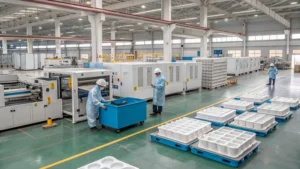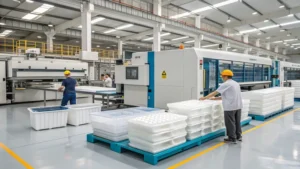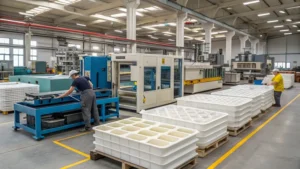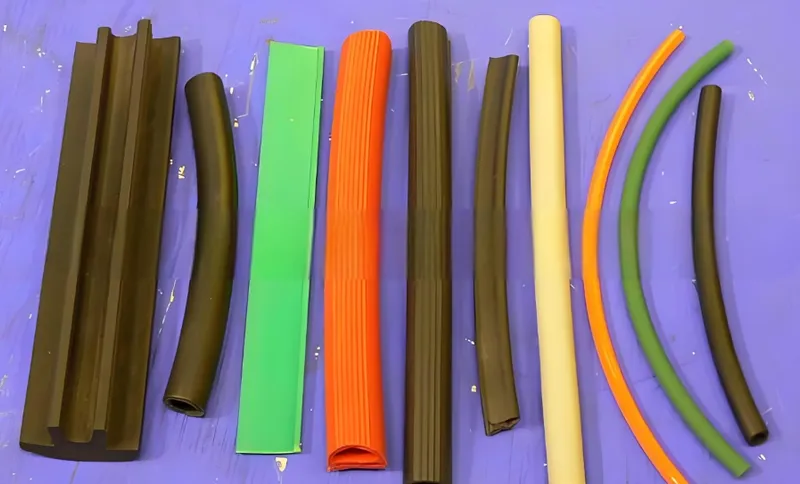
Shrinkage in extruded parts is a common challenge in manufacturing, impacting the precision and quality of the final product. It occurs as materials cool and internal stresses relax after being shaped through extrusion. Minimizing shrinkage is vital to ensure parts meet exact specifications and perform reliably in applications ranging from aerospace to medical devices.
Shrinkage in extruded parts results from thermal contraction1 and stress relaxation post-extrusion, necessitating strategies like material selection, design adjustments, and process optimization to maintain dimensional accuracy.
In this blog post, we’ll explore effective strategies to minimize shrinkage, including choosing the right materials, optimizing design, controlling the extrusion process, and applying post-processing techniques. We’ll also examine how shrinkage differs between plastics and metals and provide actionable insights for manufacturers.
Shrinkage only occurs in plastic extruded parts.False
Shrinkage affects both plastic and metal extruded parts, though the causes and mitigation strategies vary depending on the material.
- 1. What is Shrinkage in Extruded Parts?
- 2. How Does Material Selection Impact Shrinkage?
- 3. What Design Considerations Help Minimize Shrinkage?
- 4. How Does Process Control Affect Shrinkage?
- 5. What Post-Processing Techniques Can Reduce Shrinkage?
- 6. What Are the Differences Between Shrinkage in Plastics and Metals?
- 7. Conclusion
What is Shrinkage in Extruded Parts?
Shrinkage refers to the reduction in size or volume of a part after extrusion, driven by:
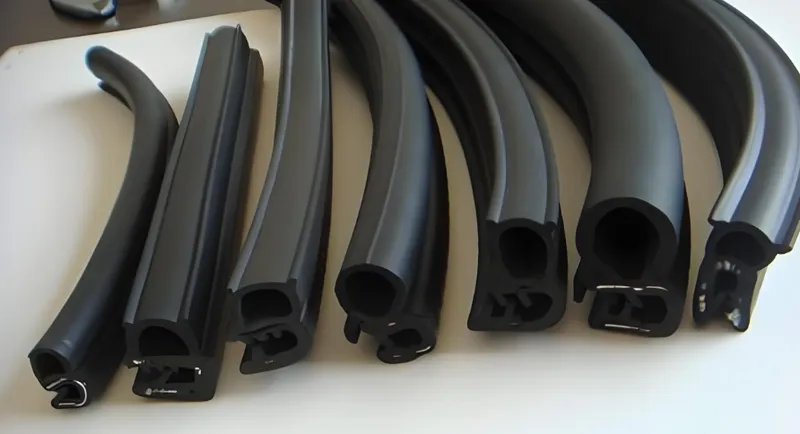
-
Thermal Contraction: As the material cools from its processing temperature, it contracts.
-
Stress Relaxation: Internal stresses induced during extrusion relax over time, altering dimensions.
This phenomenon can compromise dimensional accuracy, making it a critical concern in precision-driven industries. Understanding its causes is the first step to implementing effective minimization strategies.
How Does Material Selection Impact Shrinkage?
Choosing materials with lower coefficients of thermal expansion (CTE)2 is a foundational strategy for minimizing shrinkage. Materials with low CTE undergo less dimensional change during cooling, enhancing stability.

Materials like polycarbonate3 for plastics and Invar for metals, with low CTE, reduce shrinkage in extruded parts, improving precision in manufacturing.
Material Choices for Plastics and Metals
-
Plastics: Amorphous plastics such as polycarbonate(0.5–0.7% shrinkage) and acrylics outperform semi-crystalline plastics like polypropylene(1.5–2.0% shrinkage). Adding fillers like fiberglass can further stabilize dimensions.
-
Metals: Aluminum exhibits moderate shrinkage (1.0–2.0%), while alloys like Invar (0.1–0.2%) are prized for their minimal thermal expansion, ideal for high-precision applications.
Table: Comparison of Shrinkage Rates by Material Type
| Material Type | Example | Typical Shrinkage Rate (%) | Notes |
|---|---|---|---|
| Amorphous Plastics | Polycarbonate | 0.5–0.7 | Low shrinkage, excellent stability |
| Semi-Crystalline Plastics | Polypropylene | 1.5–2.0 | Higher shrinkage, cooling rate sensitive |
| Metals | Aluminum | 1.0–2.0 | Varies by alloy, significant contraction |
| Metals | Invar | 0.1–0.2 | Minimal CTE, ideal for precision parts |
Material selection alone eliminates shrinkage in extruded parts.False
While crucial, material choice must be paired with design and process controls to effectively minimize shrinkage.
What Design Considerations Help Minimize Shrinkage?
Smart design adjustments can preempt shrinkage-related issues, ensuring parts meet final specifications.

Designing with shrinkage compensation4 and symmetry reduces dimensional inaccuracies5 and warping in extruded parts.
Key Design Strategies
-
Oversizing Parts: Factor in expected shrinkage by making parts slightly larger than the target dimensions. Post-shrinkage, they align with specifications.
-
Symmetrical Designs: Balanced geometries promote uniform cooling and reduce warping caused by uneven shrinkage.
-
Simplified Geometries: Avoid thin walls or complex shapes that cool unevenly, amplifying shrinkage and distortion.
Symmetrical designs always prevent warping in extruded parts.False
Symmetry helps, but material properties and process conditions also influence warping.
How Does Process Control Affect Shrinkage?
Precise control over extrusion parameters6 minimizes internal stresses and ensures uniform shrinkage.

Optimizing temperature, cooling rates, and pressure during extrusion reduces shrinkage and enhances part quality.
Critical Process Factors
-
Extrusion Temperature: Too high, and thermal contraction increases; too low, and flow issues arise. Optimal temperatures balance flow and stability (e.g., 140–190°C for plastics, per industry standards).
-
Cooling Rate7: Gradual cooling for plastics prevents warping, while controlled quenching or annealing suits metals.
-
Pressure Management: Consistent pressure avoids voids and stress concentrations that exacerbate shrinkage.
Rapid cooling always increases shrinkage in extruded parts.False
Rapid cooling may lock in stresses, but its effect on shrinkage varies by material and geometry.
What Post-Processing Techniques Can Reduce Shrinkage?
Post-processing stabilizes parts by relieving stresses that contribute to shrinkage.

Annealing8 and quality control post-extrusion minimize residual stresses and maintain dimensional accuracy.
Effective Techniques
-
Annealing: Heating and slowly cooling parts (e.g., plastics at specific temperatures or metals via heat treatment) relaxes stresses. This is especially effective for high-shrinkage materials.
-
Inspection: Regular dimensional checks and statistical process control (SPC) ensure consistency and allow real-time adjustments.
Annealing completely eliminates shrinkage in extruded parts.False
Annealing reduces shrinkage by relieving stresses, but some shrinkage persists, particularly in high-shrinkage materials.
What Are the Differences Between Shrinkage in Plastics and Metals?
Shrinkage mechanics differ between plastics and metals, influencing mitigation approaches.

Plastics shrink due to thermal contraction and crystallization, while metals shrink uniformly based on CTE and phase changes.
Plastics
-
Thermal Contraction: Cooling from processing temperatures causes shrinkage.
-
Crystallization: Semi-crystalline plastics (e.g., polypropylene) shrink more due to crystal formation.
-
Anisotropy: Molecular orientation during extrusion can lead to uneven shrinkage.
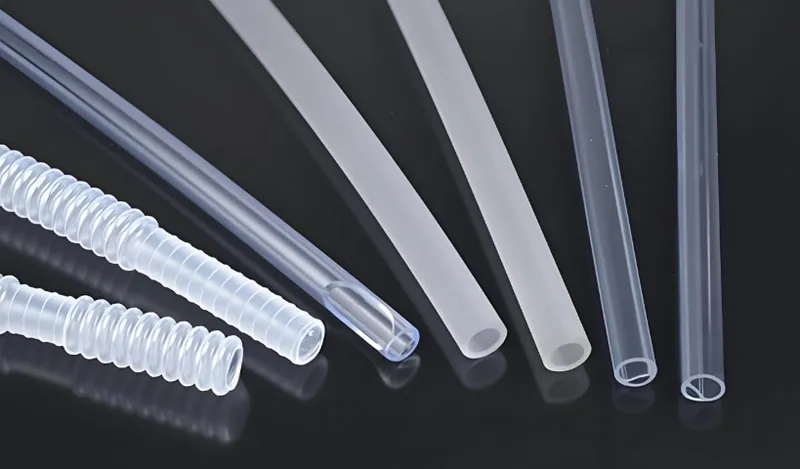
Metals
-
Thermal Contraction: Uniform shrinkage tied to CTE (e.g., higher in aluminum, lower in Invar).
-
Phase Changes: Some alloys undergo structural shifts during cooling, affecting dimensions.
-
Stress Relaxation: Residual stresses from extrusion relax over time, altering size.
Conclusion
Minimizing shrinkage in extruded parts demands a multi-faceted approach:
-
Material Selection9: Opt for low-CTE options like polycarbonate or Invar.
-
Design: Compensate for shrinkage and prioritize symmetry.
-
Process Control: Fine-tune temperature, cooling, and pressure.
-
Post-Processing: Use annealing and monitoring to stabilize parts.
By integrating these strategies—material choice, design foresight, process precision, and post-extrusion care—manufacturers can curb shrinkage, boosting the precision and reliability of extruded parts.
While shrinkage can’t always be eradicated, especially in high-shrinkage materials, these techniques significantly mitigate its impact. Tailor your approach to your application’s needs for optimal results in industries like automotive, aerospace, and healthcare.
-
Understanding thermal contraction is crucial for manufacturers to minimize shrinkage and enhance product quality. ↩
-
Exploring CTE helps manufacturers choose materials that minimize shrinkage, ensuring precision in extruded parts. ↩
-
Polycarbonate's low shrinkage rate makes it a top choice for precision applications; learn more about its advantages here. ↩
-
Explore this resource to learn about innovative techniques for managing shrinkage in manufacturing processes, ensuring precision and quality. ↩
-
This link provides insights into strategies for minimizing dimensional inaccuracies, crucial for achieving high-quality extruded products. ↩
-
Discover best practices for managing extrusion parameters to enhance product quality and reduce shrinkage issues in manufacturing. ↩
-
Understanding cooling rates is crucial for preventing warping in plastics and ensuring quality in metal parts. Explore this link for detailed insights. ↩
-
Annealing is vital for stress relief in materials, enhancing dimensional accuracy. Discover more about its benefits in manufacturing. ↩
-
Choosing the right material is key to minimizing shrinkage and ensuring product reliability. Learn more about effective material selection strategies. ↩



